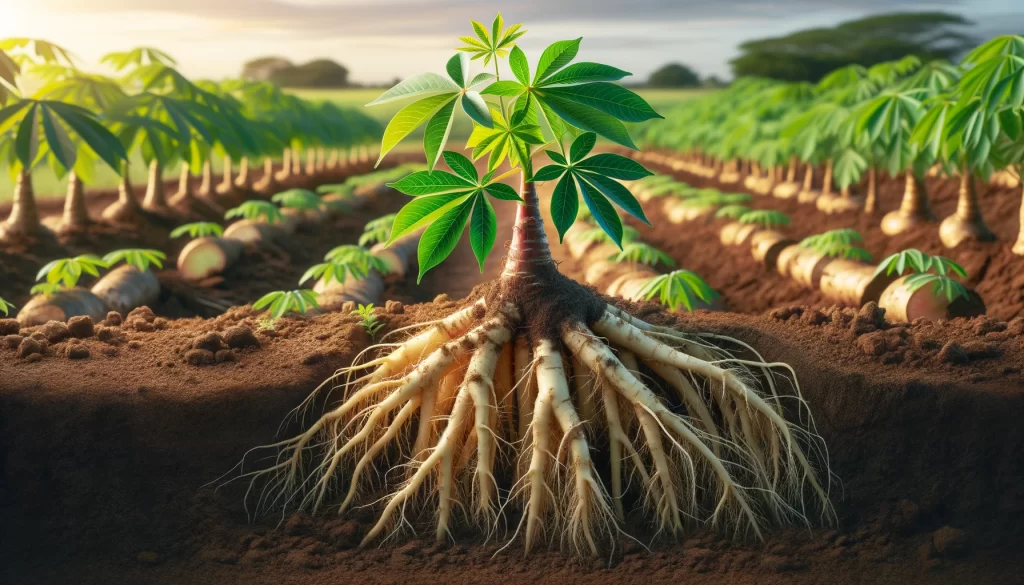- This topic is empty.
- AuthorPosts
- January 21, 2025 at 11:17 pm #543314

Cassava is a highly valued crop known for its versatility and resilience in various climates. The success of cassava cultivation hinges on several factors, one of the most critical being the planting distance.
Proper spacing between cassava plants can significantly influence growth rates, yield potential, and overall crop health.
This article will explore the importance of cassava planting distance, optimal spacing recommendations, factors affecting spacing decisions, and the implications for sustainable farming practices.
1. importance of cassava planting distance
The planting distance for cassava plays a crucial role in determining the availability of resources such as sunlight, water, and nutrients.
When plants are spaced adequately, they have better access to these essential resources, promoting healthy growth and reducing competition.
Proper spacing also facilitates airflow between plants, which can help prevent the spread of diseases and pests.
As a result, maintaining optimal planting distances is vital for maximizing both the quantity and quality of cassava tubers produced.
2. optimal spacing recommendations
Optimal planting distances for cassava can vary based on several factors, including soil type, variety, and local climatic conditions.
Generally, a spacing of 1 meter between rows and 0.8 to 1 meter between plants within a row is recommended. This configuration allows for sufficient room for root development while enabling efficient harvesting.
Some farmers may choose to adjust these distances based on their specific agricultural practices or machinery used for planting and harvesting. The goal is to create an environment that supports vigorous growth and high yields.
3. factors affecting planting distance decisions
Several factors can influence the decision on planting distance for cassava. Soil fertility is a primary consideration; in fertile soils, plants may thrive even when spaced closer together. Conversely, in less fertile soils, wider spacing may be necessary to ensure each plant can access enough nutrients.
Additionally, the cassava variety being cultivated can impact spacing decisions. Some varieties naturally grow larger and may require more room, while others can be planted more densely.
Environmental factors, such as rainfall and temperature, also play a role in determining the ideal planting distance for optimal growth.
4. implications for sustainable farming practices
Choosing the right cassava planting distance is not only beneficial for immediate crop yield but also contributes to sustainable farming practices. Adequate spacing helps maintain soil health by reducing erosion and promoting nutrient cycling.
It also supports biodiversity by creating a more balanced ecosystem where beneficial organisms can thrive.
By optimizing planting distances, farmers can minimize the need for chemical inputs, as healthier plants are better able to compete with weeds and resist pests naturally. This approach aligns with sustainable agriculture goals, ensuring long-term productivity and environmental stewardship.
5. best practices for cassava planting distance
Implementing best practices for cassava planting distance involves careful planning and monitoring throughout the growing season. Farmers should conduct soil tests to understand nutrient levels and adjust spacing accordingly.
Regular observation of plant health can provide insights into whether adjustments are needed. Utilizing crop rotation and intercropping with compatible species can also enhance overall farm productivity and soil health.
Additionally, employing mechanized planting equipment can help achieve consistent spacing, ensuring that plants have the best chance to thrive.
In conclusion, understanding cassava planting distance is essential for maximizing crop yield and ensuring sustainable farming practices.
By recognizing the importance of optimal spacing, farmers can improve resource utilization and reduce competition among plants. Careful consideration of soil type, cassava variety, and environmental factors will lead to better planting decisions.
As the demand for cassava continues to grow, implementing effective planting strategies will be crucial for the success of cassava cultivation and the long-term health of agricultural systems.
- AuthorPosts
- You must be logged in to reply to this topic.

